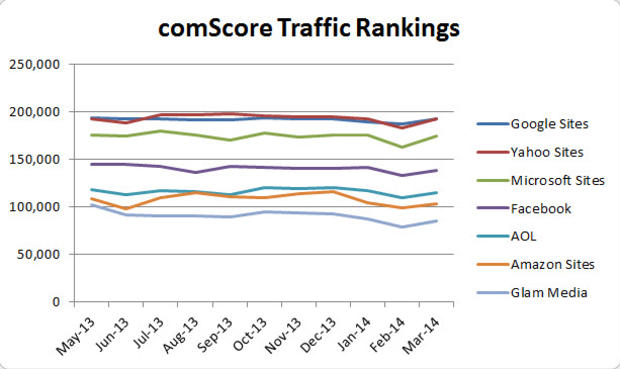Internet companies struggle to grow profits, sales
The latest Yahoo (YHOO) mini scandal is that CEO Marissa Mayer reportedly let major advertisers wait nearly two hours at a dinner meeting in France because she slept through it. Here's what one told the Wall Street Journal:
If it were an investor meeting, a board meeting or a potential acquisition, I am sure she or someone from her team would have woken her up," said one top executive in attendance. "It is another instance where she demonstrated that she doesn't understand the value of clients, ad revenue or agencies.
The move was particularly bad because Yahoo, like many Internet companies, has been struggling to impress advertisers. Across the web, ad rates keep dropping while advertisers demand a level of provable performance that is unavailable from traditional media. Internet audiences are notoriously fickle. They flit from one site to another and are usually unwilling to pay for what they get. It's a recipe for a tough business model.
Mayer no doubt knows this well. Yahoo has faced years of advertising revenue declines, even if last quarter showed a small improvement on the display ad front. Mayer wants to turn Yahoo into a collection of digital magazines on a variety of topics, with the expectation that consumers and advertisers will follow. She hired Katie Couric as global anchor last fall and recently brought on Michael Isikoff as chief investigative correspondent.
Other large web brands, including AOL, are hiring big-name talent in hopes of attracting new audience and advertisers. But that doesn't seem to be happening. A CBS MoneyWatch analysis of available data from comScore shows that from May 2013 to March 2014, the top seven websites at best kept roughly flat traffic, and some saw a decline.
Bottom line: If companies can't attract more traffic and ad prices decline, they need to find new ways to make money.
Even ad king Google, which continues to see overall revenue growth, has found that advertising rates keep dropping. There are a variety of reasons why. Ad bidding, a commonly used mechanism in the business, has driven down rates over time. Plus, marketers are using measurements to see advertising effectiveness and aren't as willing to pay as much.
As 19th century retail pioneer John Wanamaker famously said, "Half the money I spend on advertising is wasted; the trouble is I don't know which half." Using that logic, it makes sense that now that advertisers can see where referrals are coming from, they may not feel the need to buy as much volume.
And there is volume aplenty. While premium outlets may be able to command a higher price, there are a plethora of sites where marketers can purchase cheaper advertising. Those low prices keep a ceiling on how much anyone can charge.
Online media companies have tried corporate sponsorships, crowdsourcing, native advertising (which used to be called advertorials in print), selling access to more in-depth content, and even e-commerce by selling third-party products. But so far no clear profitable business model has emerged for online media.
During the dotcom era, it was common for investors to claim that the nature of business had completely changed and traditional measures like profitability, or even revenue growth, weren't so important. You probably remember how that turned out.
But it may be that they were half right. Making money is still important. It's just that on the Internet, the old rules for how to make it have gone out the window.
